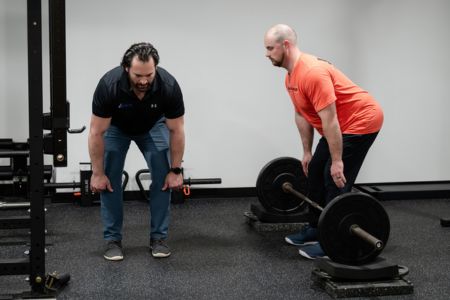Aging is a natural part of life, but strength training as you age plays a powerful role in shaping how you move through the decades. One of the most powerful tools to support healthy aging is strength training. Often overlooked in favor of cardio or flexibility exercises, strength training has profound benefits for bone health, mental health, cardiovascular health, and overall quality of life. Whether you’re in your 40s, 60s, or beyond, lifting weights or using resistance bands can help you age with strength, confidence, and independence.
Why Strength Training Matters as You Age
As we get older, muscle mass naturally declines—a process known as sarcopenia. Without intervention, this loss of strength can lead to reduced mobility, balance issues, and a higher risk of falls or fractures. Strength training as you age combats this decline by building and preserving muscle tissue, supporting bone density, and improving metabolic health.
But the benefits extend far beyond the physical. Regular resistance training has been linked to sharper cognition, better mood regulation, and even improved sleep quality. In short, strength training is not just about vanity or fitness—it’s about living better, longer.
Key Benefits of Strength Training as you Age
1. Supports Bone Health and Reduces Osteoporosis Risk
Osteoporosis affects millions of adults as they age, leading to fragile bones and an increased risk of fractures. Weight-bearing exercises, like squats, lunges, and deadlifts, place healthy stress on the bones, signaling them to grow stronger. Studies consistently show that strength training helps maintain bone mineral density and reduces the risk of osteoporosis-related injuries.
2. Boosts Cardiovascular Health
While cardio often gets the spotlight for heart health, strength training is just as valuable. Lifting weights helps lower blood pressure, improve cholesterol levels, and enhance circulation. Combining resistance training with aerobic exercise creates a balanced routine that protects your cardiovascular system and reduces the risk of heart disease.
3. Improves Mental Health and Cognitive Function
Strength training doesn’t just build muscles—it also strengthens the mind. Resistance training stimulates the release of endorphins, which improve mood and reduce symptoms of anxiety and depression. There’s also growing evidence that strength training may enhance memory and executive function, helping guard against cognitive decline as we age.
4. Enhances Independence and Daily Function
Simple daily activities—like carrying groceries, climbing stairs, or getting up from a chair—require strength. By maintaining muscle mass and joint stability, resistance training supports independence and reduces the likelihood of falls, one of the biggest risks to health and mobility in older adults.
5. Promotes Longevity and Quality of Life
Strength training is associated with lower all-cause mortality. In other words, people who lift weights or use resistance as part of their weekly exercise routine tend to live longer—and with better quality of life. It’s not just about adding years to your life, but adding life to your years.
How to Get Started with Strength Training as You Age
Starting a new exercise routine later in life can feel intimidating, but it doesn’t have to be. Here are some simple steps to build confidence and create a sustainable strength program:
- Start Small and Progress Gradually
Begin with bodyweight exercises like squats, push-ups (modified if needed), or wall sits. Over time, add resistance bands, free weights, or machines. - Focus on Compound Movements
Exercises that work multiple muscle groups at once—like deadlifts, lunges, or rows—are highly effective and mimic real-life activities. - Prioritize Proper Form
Good technique is crucial to prevent injury. Consider working with a trainer or healthcare provider who specializes in exercise. Dr. Mike would be a great provider to speak to! - Aim for Consistency, Not Perfection
Two to three strength training sessions per week are ideal. Even short, 20–30 minute workouts can make a significant impact over time. - Combine with Other Healthy Habits
Pair resistance training with aerobic activity, stretching, and a balanced diet rich in protein, calcium, and vitamin D to maximize results.
How Much Exercise Do You Really Need?
For adults, the CDC’s Physical Activity Guidelines for Americans emphasize that moving more and sitting less throughout the day leads to significant health benefits—even small amounts of moderate-to-vigorous activity make a difference. To achieve substantial results, adults are encouraged to aim for 150–300 minutes per week of moderate-intensity exercise (such as brisk walking or cycling) or 75–150 minutes of vigorous activity (like running or swimming). In addition, muscle-strengthening activities that engage all major muscle groups should be performed at least two days a week to support overall health and wellness.
For older adults, the same guidelines apply with additional considerations. The CDC highlights the importance of multicomponent activities that combine aerobic, strength, and balance training to help reduce fall risk and support independence. Older adults are also encouraged to adjust the intensity of exercise to match their individual fitness levels and health conditions. When chronic conditions or limitations make it difficult to reach the full 150 minutes of activity per week, the key is to stay as physically active as abilities allow, since any amount of movement still provides valuable health benefits.
Tips for Staying Motivated
- Set Functional Goals: Focus on what strength training helps you achieve in daily life, like lifting a grandchild or carrying luggage with ease.
- Track Your Progress: Keep a log of your workouts and celebrate small wins.
- Find a Community: Join a class or partner with a friend for accountability and fun.
- Listen to Your Body: Rest and recovery are just as important as the workouts themselves.
Final Thoughts
Strength training as you age is one of the best investments you can make in your health. From protecting against osteoporosis and heart disease to boosting mood and independence, its benefits are both immediate and long-lasting. No matter where you’re starting from, it’s never too late to pick up a weight—or even just use your own body weight—and begin building a stronger, healthier future.






Leave A Comment